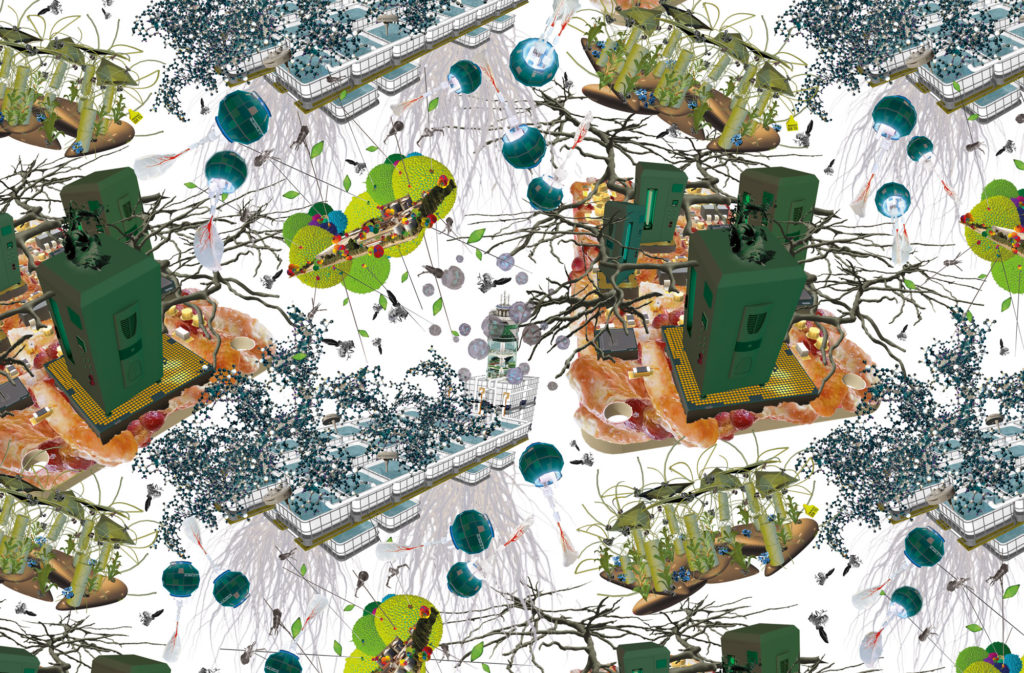“Nature is boring,” some innovators claim today, as they speculate about what life could be. What if biology itself were envisioned as a form of technology, a new platform for innovation? What new biological systems might one intentionally design? Could we possibly even correct, that is, “debug” nature? A century ago, such ideas led to the development of new types of fruit, flower and crop; today’s visions might include biofuels and pharmaceuticals. The biological avant-garde has never been far from other avant-gardes. The transformation of the biological has long been related to the larger transformations of the technosphere, that far-reaching technological environment, which much like the biosphere, now has a decisive impact on global metabolic processes.
Around 1948, the Promethean idea of placing genetics at the service of humanity landed right in the maelstrom of world politics. That very year, the Soviet Union began transforming vast agricultural areas according to Stalin’s “Great Plan for the Transformation of Nature.” The pseudo-science of Lysenkoism, raised to the national doctrine in the summer of 1948, also sought a radical reform of hereditary science. Defaming genetics as a bourgeois fantasy, it argued that humans could shape inheritance by controlling environmental influences. As a result, scientific genetics in the Soviet Union were paralyzed for the duration of a generation, and were instrumental in increasing rampant famine. A few years later, the biochemist Alexander Oparin took up some of the philosophical foundations of Lysenkoism and formulated his pioneering theories on the origin of life on that basis. Since then, problems of agricultural production and big questions about the origin of life have become part of political and ideological conflicts.
Even the concept of mutation was politically charged. Accordingly, mutations in the Soviet Union were purposeful and benefited agriculture. The phenotypes of agricultural products would visibly alter. For the anti-Lysenkoist West, however, mutations were random and considered detrimental. Random mutation was the main factor in a new risk analysis using laboratory-bred organisms. The Soviet daily Pravda wrote of “fly lovers and human haters” when describing the work by classical geneticists on fruit flies, which was supposed to be unrelated to the progress of production in agriculture. But the geneticists certainly recognized the importance of this work for the reality of life – for example, exposing fruit flies in the laboratory to radioactive rays, identifying serious mutations and wondering how this radiation would affect humans. Following the development of atomic bombs during the Second World War and the prospect of a radioactive future, respected geneticists called for making protection against mutations an integral part of public health care. Preserving genetic material from damage was suddenly no longer just a problem of genetic science. It was related to the fundamental question of the place of humankind in the rapid growth of the technosphere.
Concern for the habitability of the Earth met in the sciences that sought to fathom the habitability of other worlds. In 1948, rockets reached the edge of space for the first time and provided the first, fascinating pictures of the Earth’s curvature. New perspectives on the Earth led to new proposals for the transformation of the planet and even the colonization of other worlds with terrestrial organisms. A new science of “exobiology,” the study of life in other worlds, seemed within reach.
While all of these attempts to understand how “life could be” – its origins, its synthesis in the laboratory and its possible forms or abodes – were recombined around 1948, the idea of “habitability” experienced its own change. Every single fantasy indicates its own consequence for the planet – as well as for those who will inhabit it in the future. But any greater understanding of the technospheric expansion of biology, whether experimental or astronomical, must address humanity’s complex, often tragic history of keeping, finding or creating a home.
